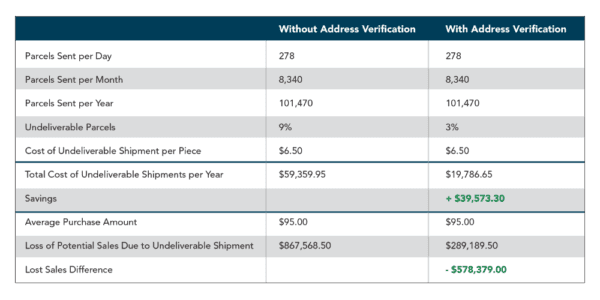This sponsored content is brought to you by Melissa.
In the fast-moving world of retail and ecommerce, where seamless logistics and personalized experiences are the norm, address data quality plays a quietly powerful role. From first impressions at checkout to last-mile delivery and ongoing customer engagement, clean and complete address data isn’t just operationally helpful — it’s essential to a retailer’s ability to scale efficiently and serve customers effectively.
Great customer data adds value at every step of the customer journey, increasing conversions, keeping delivery experiences positive, building greater loyalty for happy customers and reducing overall costs. Interested? Here’s a step-by-step approach to mastering address data quality — and why it’s a strategic imperative for today’s retailers and e-tailers.
1. The point of data entry is your first line of defense.
Get data correct from the start. This simple yet brilliant mandate is a critical strategy in the long-term battle for clean address data. Autocomplete tools both complete and verify data in real time during online checkout, account creation or in-store registration. The same solution also reduces keystrokes, simplifying data entry with autocompletion/suggestion functionality. As users type, they are shown only valid address suggestions.
It’s a step that goes a long way in verifying, standardizing (for faster processing) and consolidating data into its cleanest form possible — immediately as data enters the system. Mistakes are stopped at the door, preventing bad data from perpetuating its way into your fulfillment, returns and marketing campaigns, where data inaccuracies are more expensive to fix.
Address verification also improves customer confidence. According to Bloomberg, 56% of shoppers wouldn’t buy from a store again if they were unsatisfied with the delivery experience. Shoppers who see their address confirmed in real time are less likely to worry about shipping errors, boosting trust in the brand and reducing cart abandonment.

This graphic illustrates the scope of cost savings achievable with the implementation of an address validation solution. The example assumes an online shop sends 278 packages per day, or nearly 100,000 parcels annually. An average of 9% is typically undeliverable per year. And while undeliverable packages cannot be completely eliminated, they can be reduced by at least two-thirds with address verification. Just 3% of packages would be undeliverable, shrinking the cost of return shipments by $40,000 annually. Overall, better address management strategies would save the online shop more than $570,000 per year.
2. Enrich customer data for deeper insight and smarter delivery.
Once the basics are captured, data enrichment fills in the gaps. Secondary address information (like apartment numbers), phone numbers and even demographic or geographic indicators can be appended to help personalize customer experiences and streamline logistics.
For example, retailers using enriched address data can tailor marketing outreach based on neighborhood trends or optimize delivery routes by clustering addresses. These small improvements add up to meaningful gains in engagement and efficiency.
3. Eliminate duplicates to streamline operations.
Duplicate customer records don’t just waste space. They create tangible additional cost and confusion. Without deduplication, the same customer might receive multiple catalogs, be targeted with redundant emails or even be shipped the same item twice.
IBM estimates 20%-40% of customer profiles/records in a marketing campaign are duplicates. Do the math: one million records at just $1 per customer = $400,000 on redundancies alone.
By establishing a golden customer record — consolidated, up-to-date and complete — retailers can ensure consistent communication, reduce waste and keep their CRM systems running lean and clean. Golden records also simplify reporting and enable more accurate performance metrics.
4. Stay current with NCOA and ongoing updates.
Customer data is only as good as it is current. In the U.S. alone, nearly 30 million people change their address each year. National Change of Address (NCOA) processing helps retailers keep pace with those moves, ensuring mail reaches the right destination and eliminating undeliverables.
Staying current is a matter of both logistics and postal compliance. USPS regulations require regular updates, and falling behind can lead to penalties, wasted postage and poor delivery outcomes.
5. Optimize fulfillment with address intelligence.
Beyond basic verification, modern tools offer address intelligence; that is, the ability to understand more about each location. For example, Residential Business Delivery Indicator (RBDI) technology can flag whether an address is a home or a business, allowing retailers to choose the most cost-effective shipping option and set customer expectations accordingly. These insights empower better decision-making, especially for e-tailers who ship high volumes or offer dynamic pricing based on delivery zones and service levels.
Protect the Bottom Line (Now and in the Future)
Address data might not be the flashiest part of a retail tech stack, but it’s one of the most impactful. When treated as a living asset instead of a static record, address data becomes a tool for reducing friction, enhancing personalization and cutting costs at scale. In fact, Forrester’s research points out that customer-obsessed companies, i.e. those making insight-driven decisions based on high-quality data, are growing more than 30% annually on average.
Retailers that invest in a structured, intelligent approach to data quality are doing more than preventing avoidable errors — they’re building a foundation for growth, resilience and deeper customer loyalty.
Greg Brown is VP of Global Marketing at Melissa, provider of global contact data quality and identity verification solutions that span the entire data quality lifecycle and integrate into CRM, ecommerce, master data management and Big Data platforms. Connect with Greg at greg.brown@melissa.com or LinkedIn.













